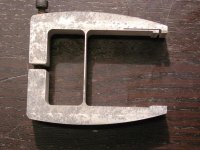John_Genesis
Plastic
- Joined
- Feb 28, 2022
Hi all,
I'm pretty new to wire EDMs and running an Agie Cut2000. I am wondering what are the best practices for parting off and catching small parts.
Do you just let them fall in the tank? I'm concerned that it will knock the lower head out of alignment.
What I was taught to do was hold everything with magnets so they won't fall in the tank but sometimes the part will shift and cause the short circuit and I have to stop the machine every 3 mins.
any advise would be greatly appreciated
I'm pretty new to wire EDMs and running an Agie Cut2000. I am wondering what are the best practices for parting off and catching small parts.
Do you just let them fall in the tank? I'm concerned that it will knock the lower head out of alignment.
What I was taught to do was hold everything with magnets so they won't fall in the tank but sometimes the part will shift and cause the short circuit and I have to stop the machine every 3 mins.
any advise would be greatly appreciated




